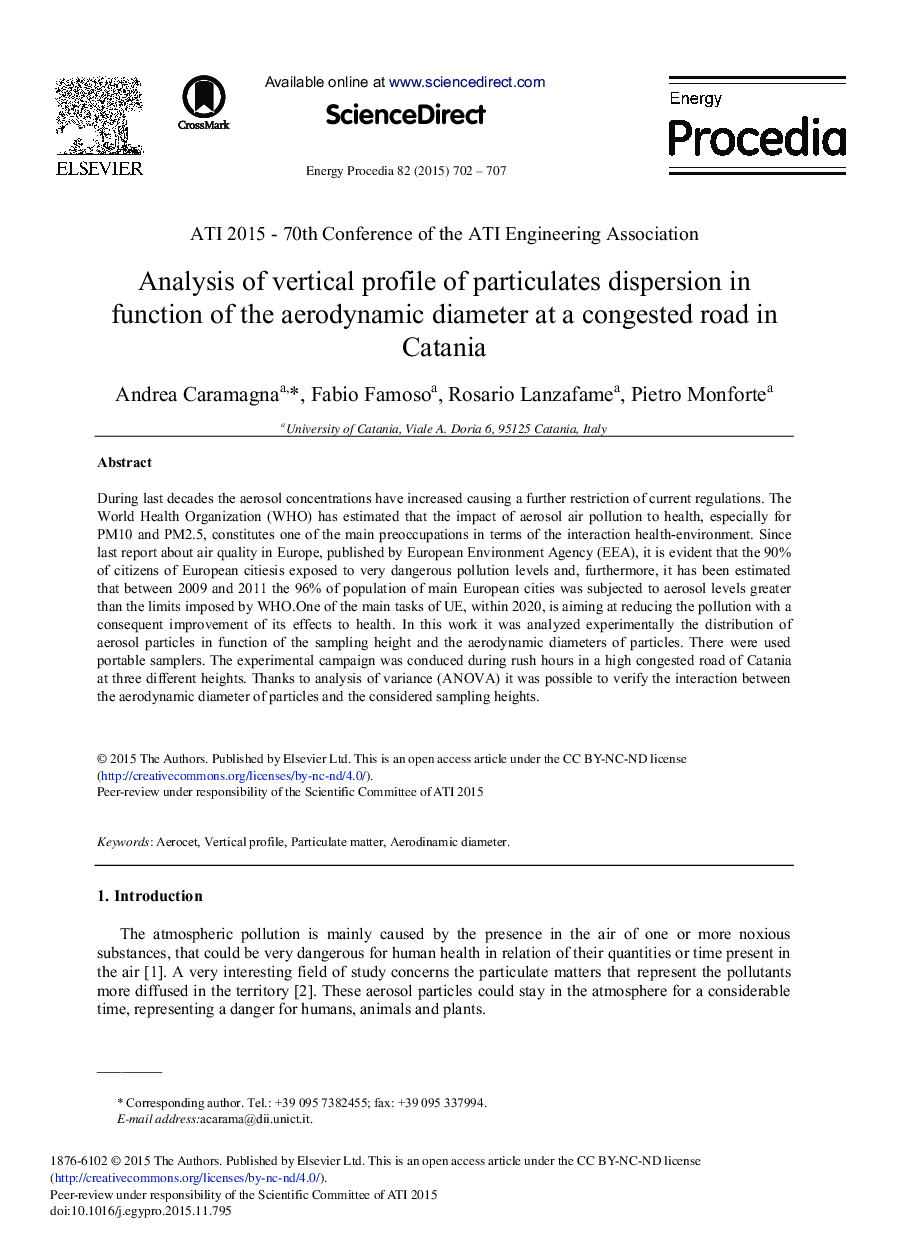| Article ID | Journal | Published Year | Pages | File Type |
|---|---|---|---|---|
| 1509128 | Energy Procedia | 2015 | 6 Pages |
During last decades the aerosol concentrations have increased causing a further restriction of current regulations. The World Health Organization (WHO) has estimated that the impact of aerosol air pollution to health, especially for PM10 and PM2.5, constitutes one of the main preoccupations in terms of the interaction health-environment. Since last report about air quality in Europe, published by European Environment Agency (EEA), it is evident that the 90% of citizens of European citiesis exposed to very dangerous pollution levels and, furthermore, it has been estimated that between 2009 and 2011 the 96% of population of main European cities was subjected to aerosol levels greater than the limits imposed by WHO. One of the main tasks of UE, within 2020, is aiming at reducing the pollution with a consequent improvement of its effects to health. In this work it was analyzed experimentally the distribution of aerosol particles in function of the sampling height and the aerodynamic diameters of particles. There were used portable samplers. The experimental campaign was conduced during rush hours in a high congested road of Catania at three different heights. Thanks to analysis of variance (ANOVA) it was possible to verify the interaction between the aerodynamic diameter of particles and the considered sampling heights.
